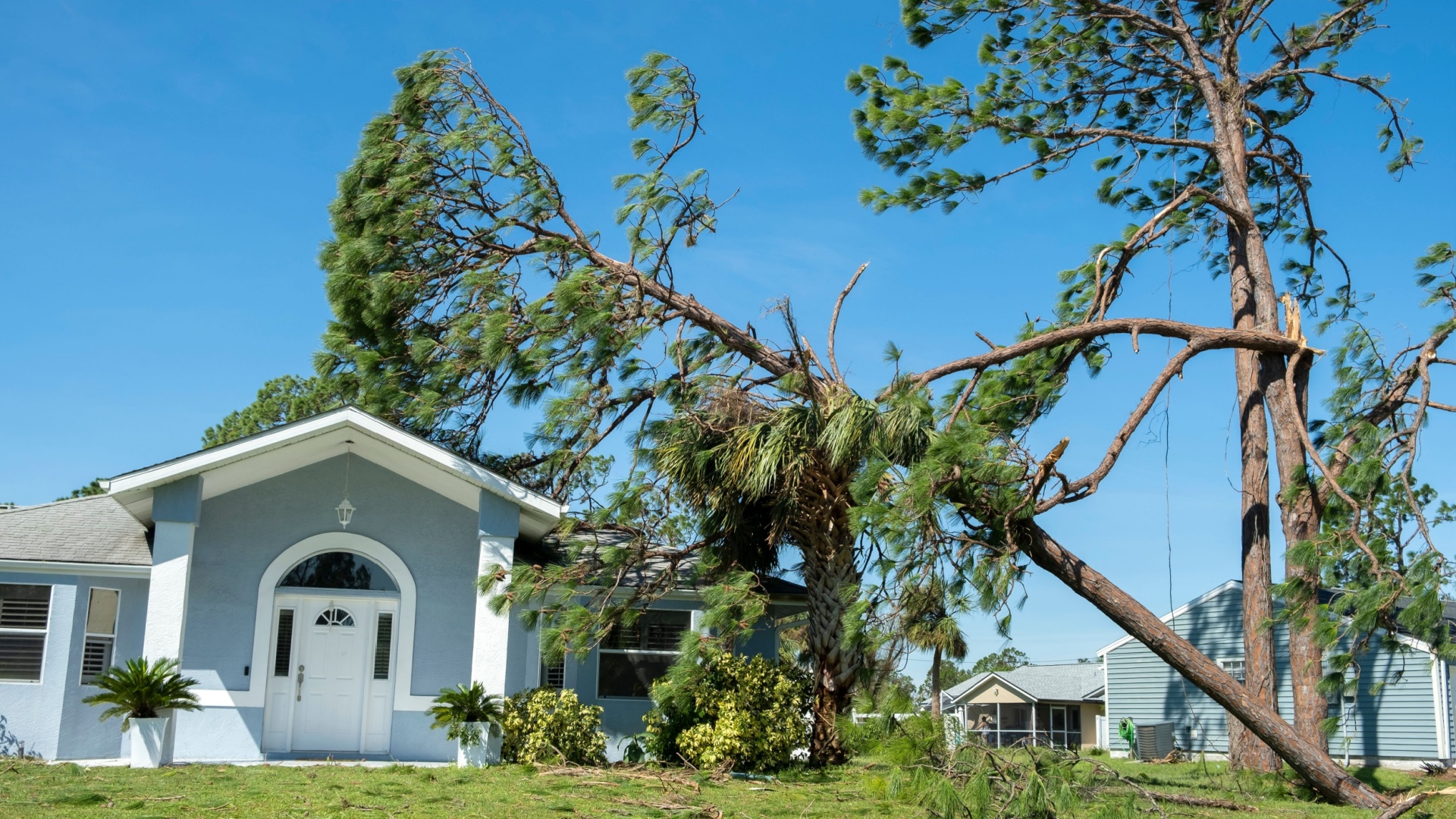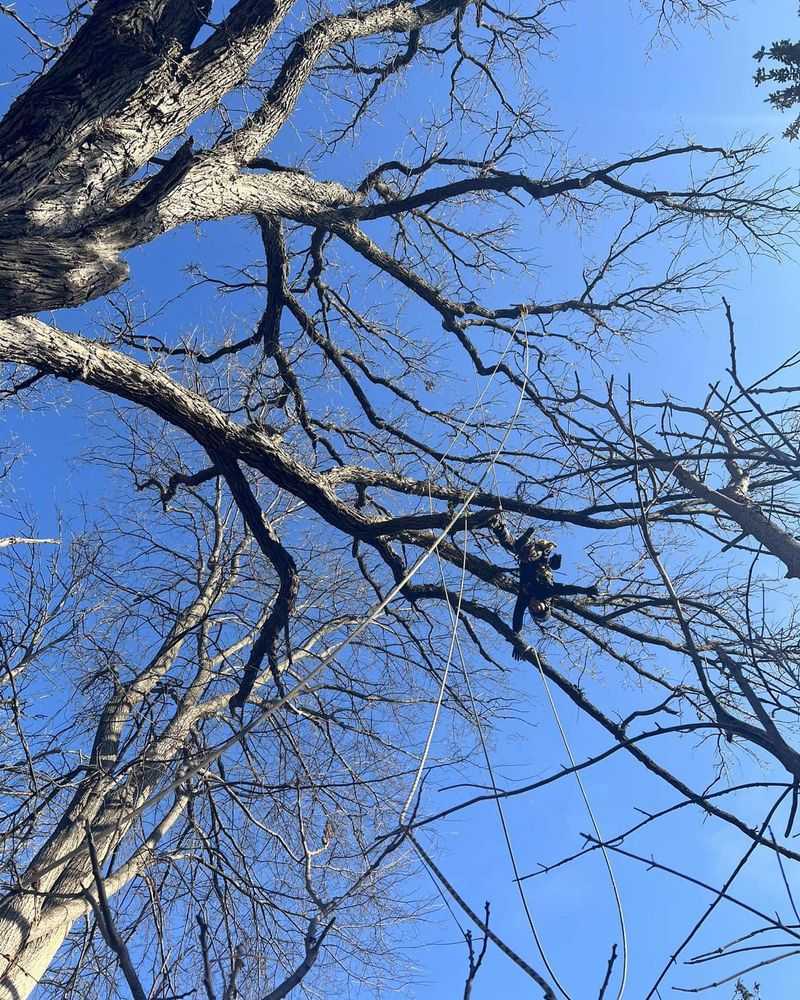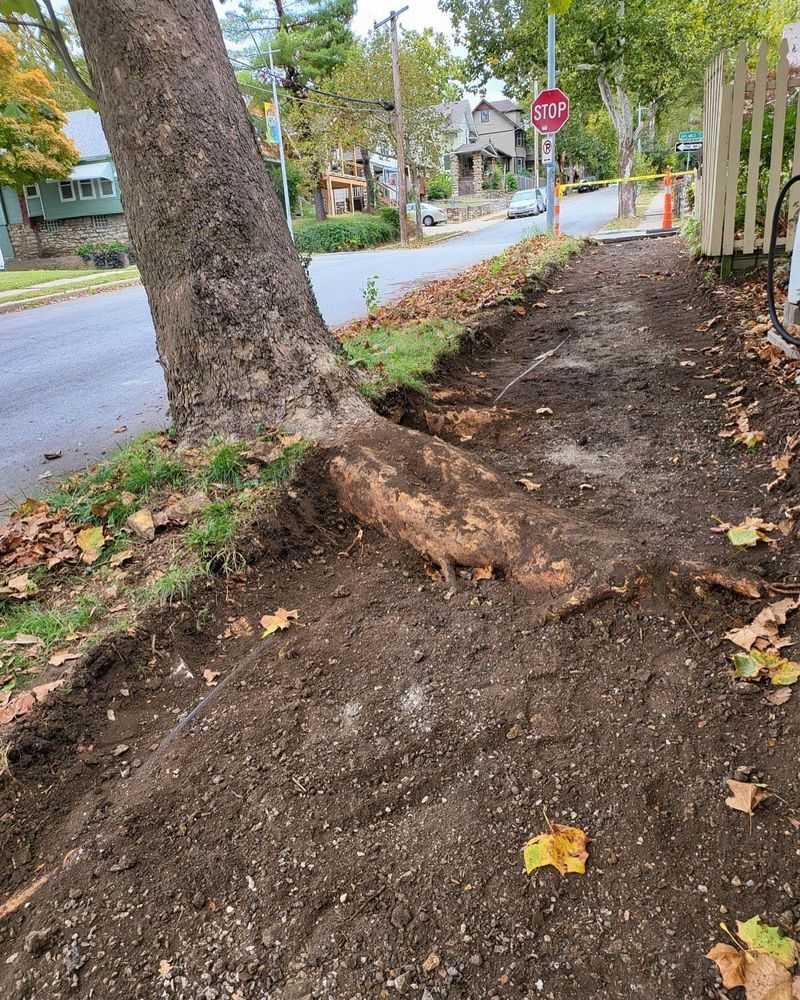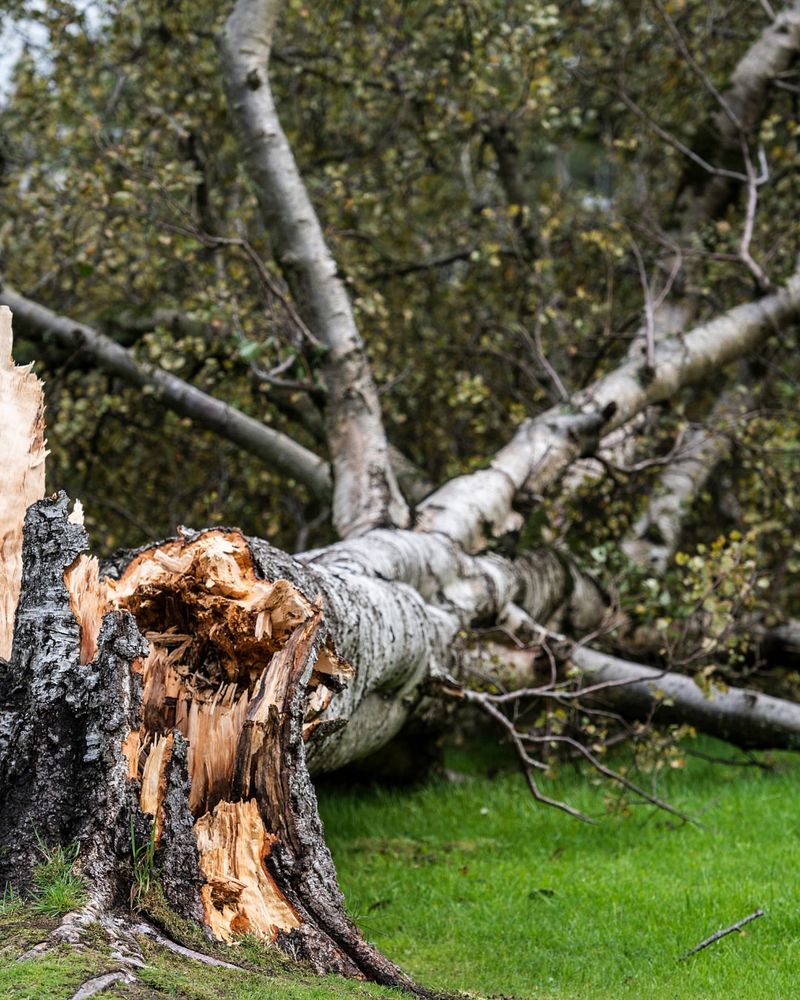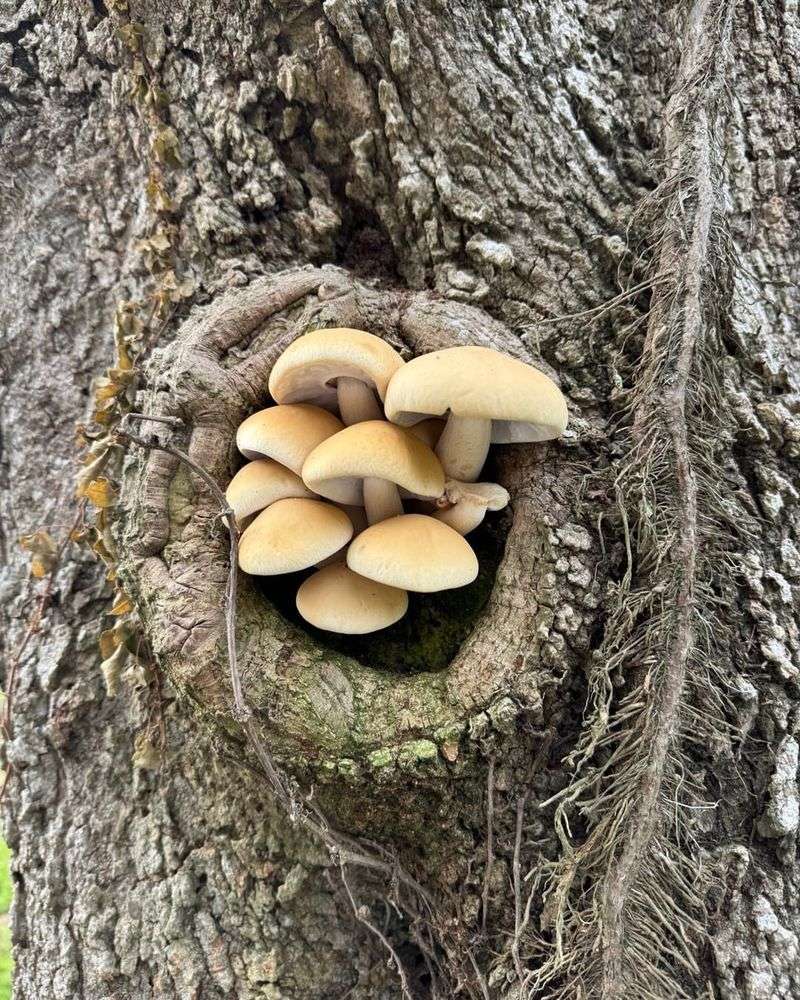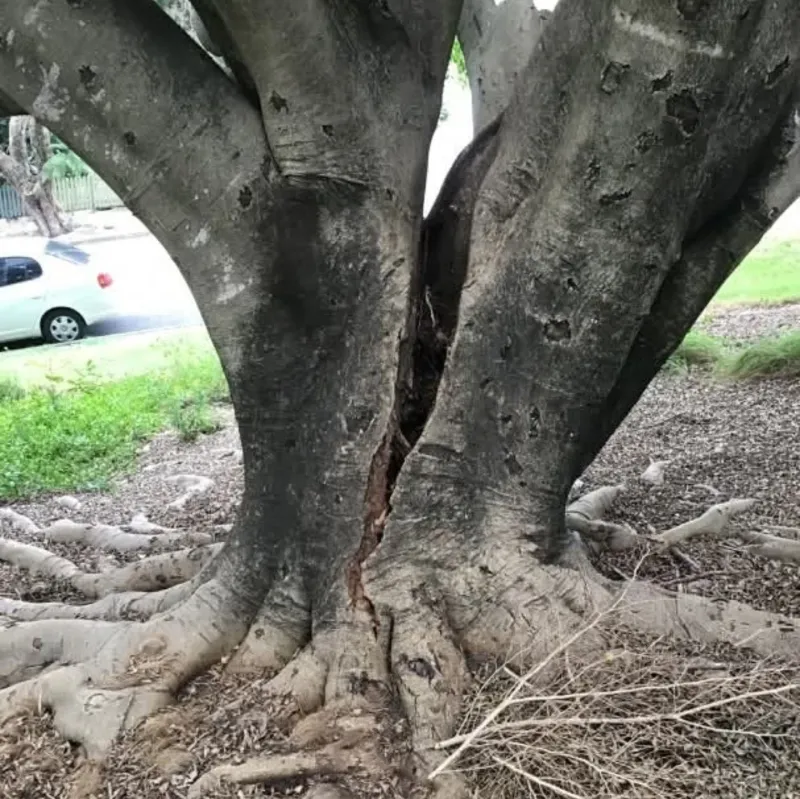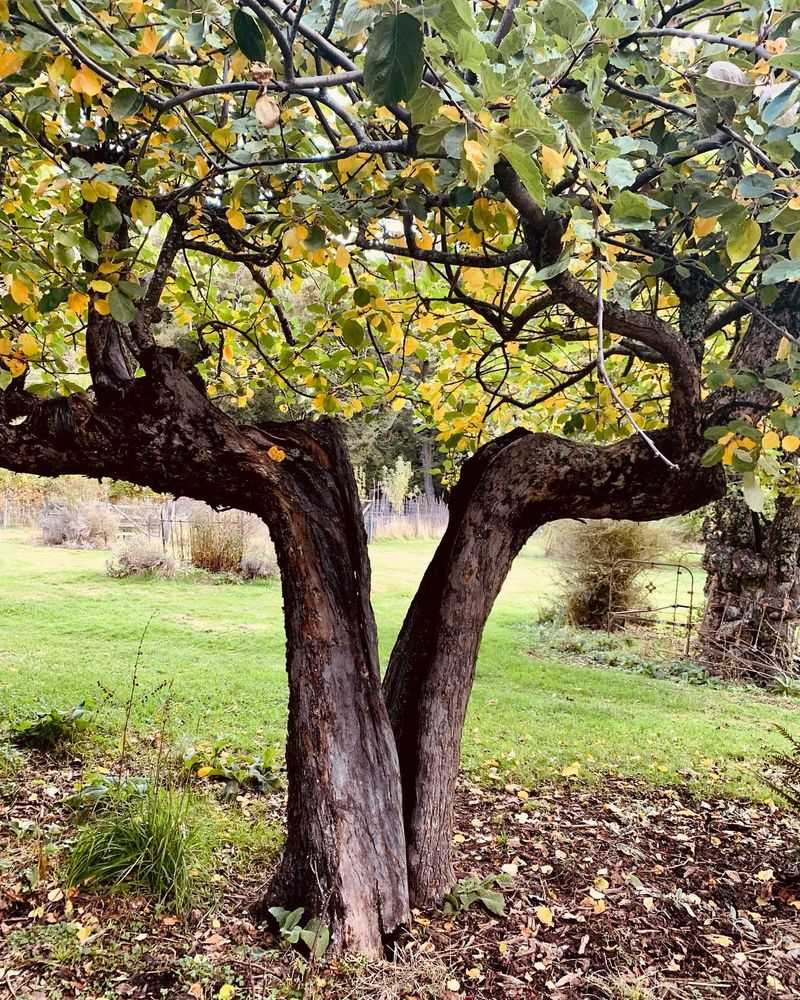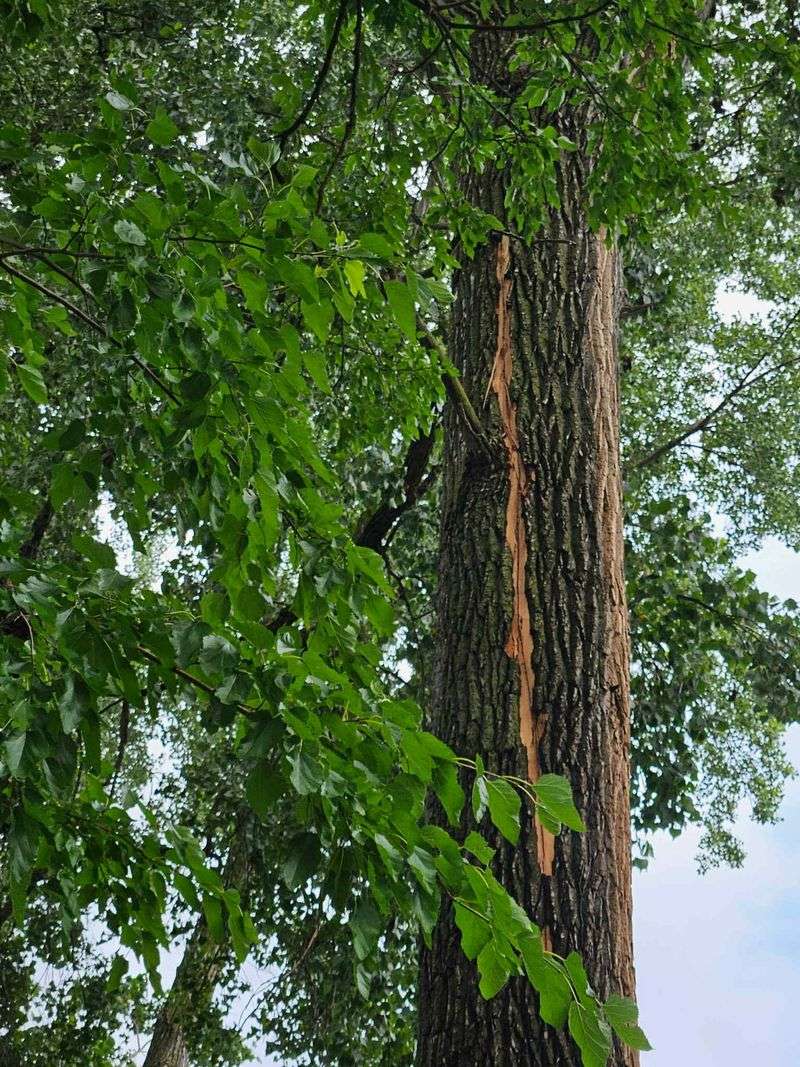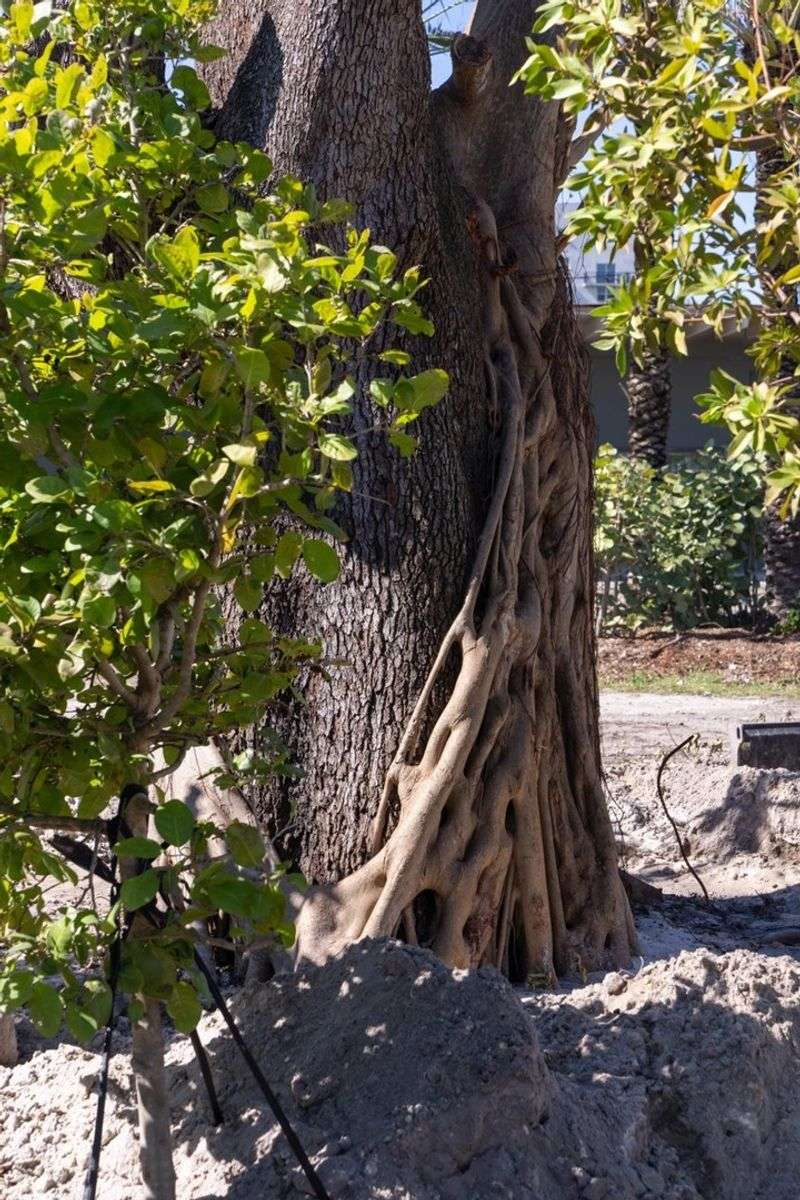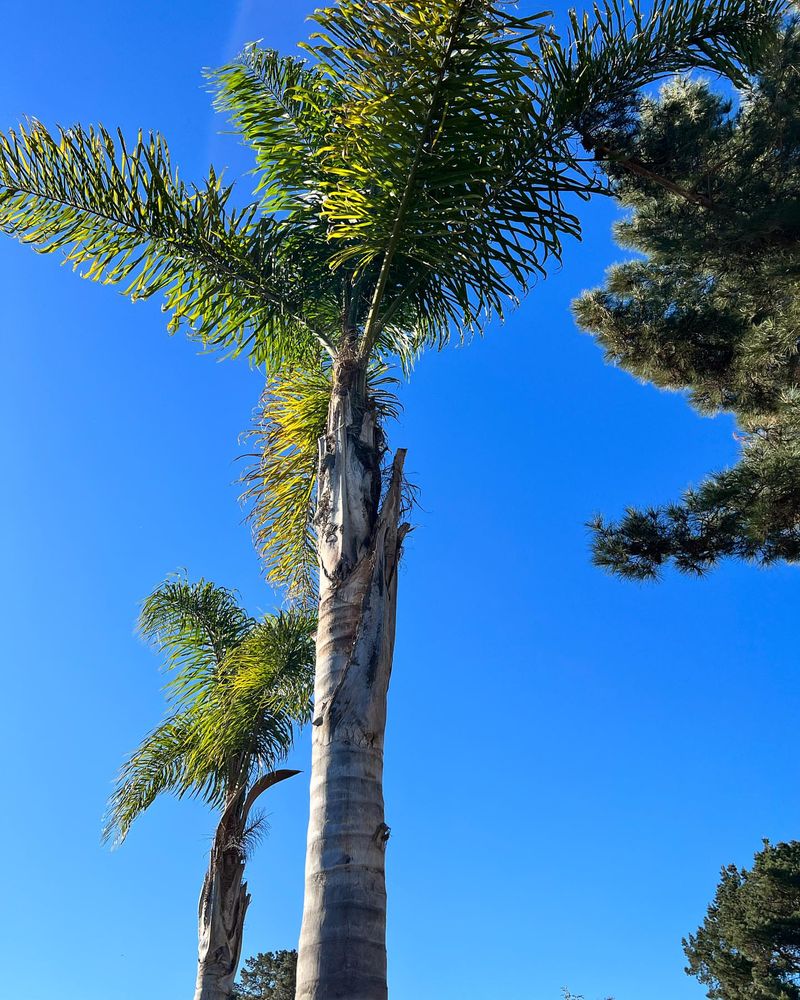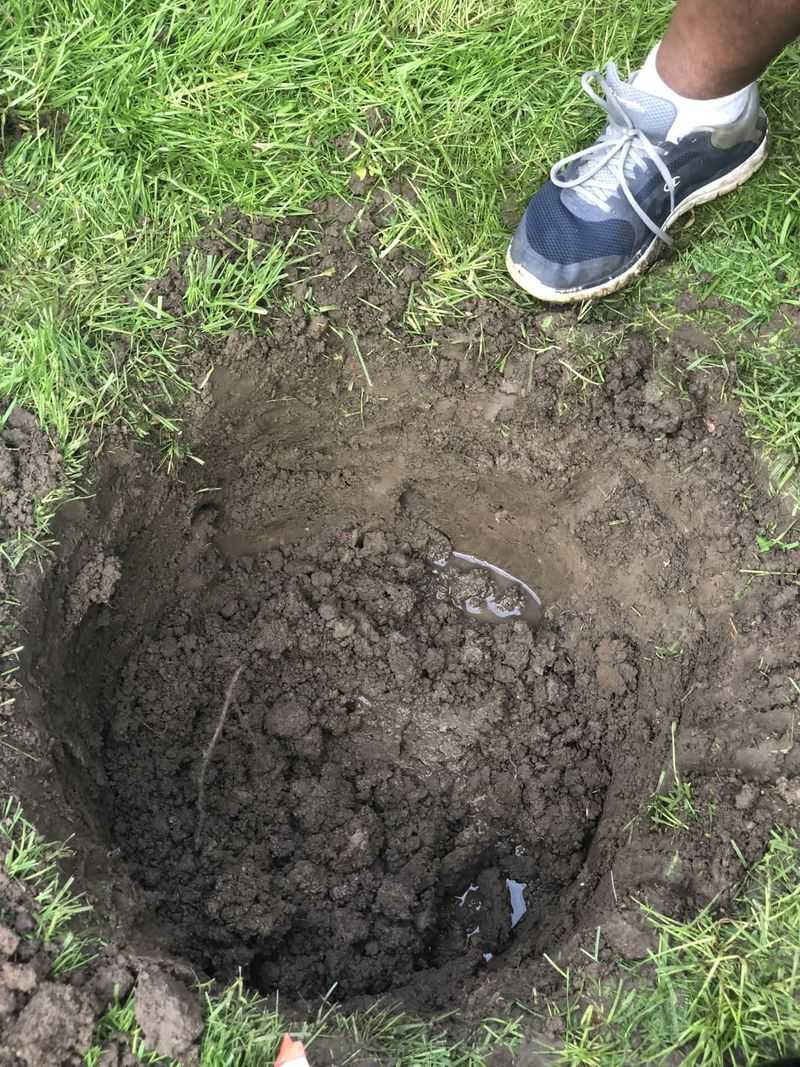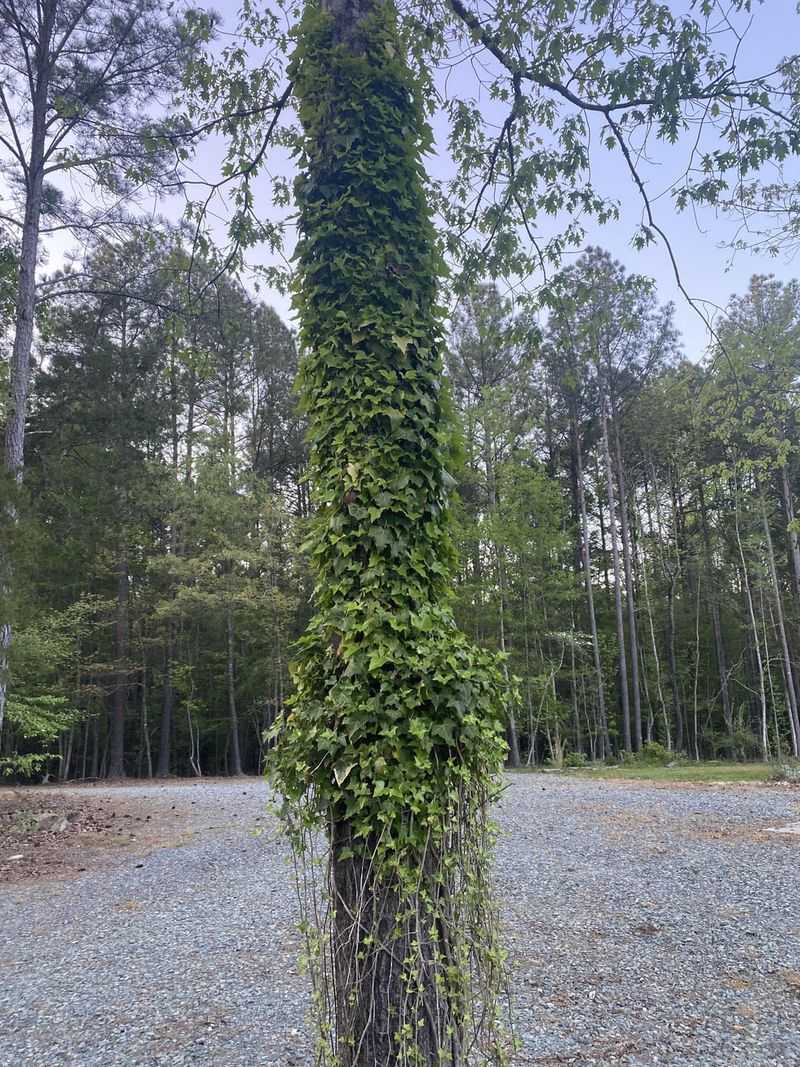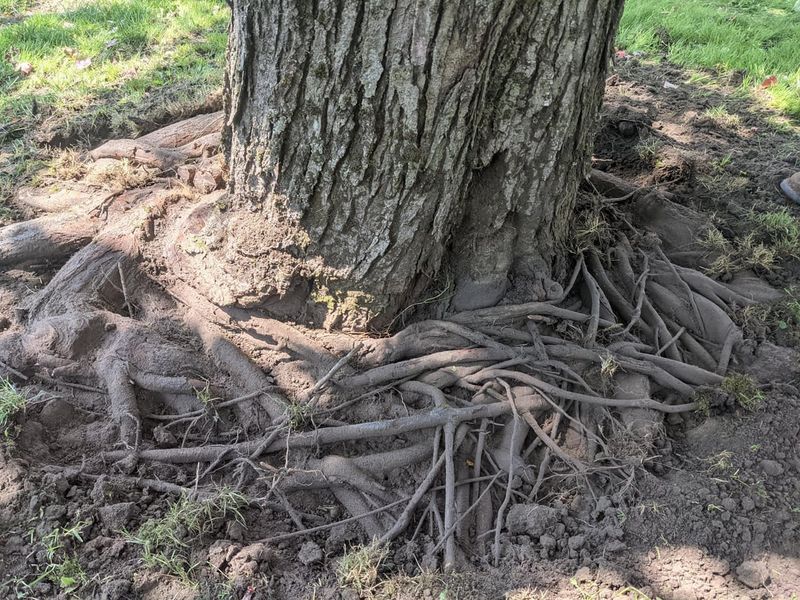Not all shade is safe. In Florida yards, trees can be silent troublemakers—hiding weak limbs, root damage, or pest problems behind their leafy charm. Ignoring the warning signs can lead to property damage, injury, or a big mess after the next storm rolls through.
Spotting these hazards early keeps your yard safer, your trees healthier, and your wallet a lot happier.
1. Hanging Dead Branches
Dead branches dangling above can snap without warning during even mild winds. Known as “widow makers” among arborists, these dangerous limbs often show no movement until they suddenly break free.
After storms, carefully scan your trees from different angles to spot potential hazards. Don’t attempt removal yourself if branches are large or high – professional tree services have specialized equipment to safely address these threats.
2. Root Damage From Construction
Construction projects near trees often sever critical roots, destabilizing even healthy-looking specimens. The damage might not show immediately, but compromised root systems can fail during storms or high winds.
Always establish protection zones around trees before starting yard projects. Cutting even 30% of a tree’s roots significantly increases its fall risk. When planning additions or landscaping changes, consult with an arborist to prevent deadly mistakes.
3. Leaning Trunks After Storms
Trees that suddenly develop a lean after storms have likely suffered root damage. This new angle signals a serious stability problem that won’t fix itself.
Check your trees after each major weather event. A tree that’s begun leaning more than 15 degrees from vertical requires immediate professional assessment. Don’t wait until hurricane season – what seems stable today could topple tomorrow when soils become saturated.
4. Mushrooms Growing At Tree Base
Fungal growths around your tree’s base aren’t just unsightly – they’re warning signs of internal decay. Mushrooms indicate that the tree is rotting from inside, potentially compromising its structural integrity.
Moisture-loving fungi thrive in Florida’s humidity, accelerating decay processes. When you spot mushrooms or conks growing on or around your tree, photograph them for identification and contact a certified arborist immediately. Trees with extensive fungal activity often need removal before they become hazards.
5. Cracked Soil Around Tree Base
Soil cracks or heaving around your tree’s base indicate root plate failure – a serious warning sign. These fractures mean the tree’s anchoring system is compromised and may be preparing to fail.
Florida’s sandy soils make trees particularly vulnerable to uprooting during strong winds. Watch for fresh soil mounds or depressions near trunks after storms. If you notice the ground lifting on one side of the tree, evacuate the area during windy conditions and call a tree professional immediately.
6. Split Trunk Formations
Trees with V-shaped splits or multiple trunks growing from the same base often develop included bark – a weak point where bark grows inward between stems. These formations create structural weaknesses that can split apart during storms.
Florida’s hurricane-force winds put extreme pressure on these defects. Look for dark crevices where trunks meet – these indicate potential failure points. Professional cabling or bracing installed by certified arborists can reinforce these vulnerable trees before they cause property damage.
7. Hollowed Trunk Cavities
Hollow sections in trunks may seem harmless, but they significantly weaken a tree’s structure. Birds and small animals often make these openings worse by nesting inside.
Florida’s combination of high humidity and frequent storms accelerates decay once cavities form. As a general rule, trees with hollows exceeding 30% of the trunk diameter become hazardous. Tap suspicious areas with a rubber mallet – a hollow sound indicates internal decay requiring professional evaluation.
8. Lightning Strike Damage
Florida leads the nation in lightning strikes, making trees particularly vulnerable to this destructive force. The intense heat instantly boils sap inside the tree, causing explosive damage that creates long vertical splits down trunks.
Trees struck by lightning may die immediately or decline slowly over months. Look for stripped bark, charred areas, or vertical scars running down the trunk. Even if the tree appears to survive initially, the internal damage often leads to decay and structural failure later.
9. Invasive Strangler Figs
Strangler figs begin life as innocent-looking vines but eventually envelop and kill their host trees. These aggressive plants create hazardous conditions as they strangle and replace the original tree’s structure.
In South Florida especially, these figs can quickly take over palms and hardwoods. The resulting merged structure often becomes unstable as the original tree decays within the strangler’s embrace. Early removal of these vines prevents future problems – cut them at ground level and apply herbicide to the cut surface.
10. Palm Trees With Hurricane Cuts
Excessive palm pruning, known as “hurricane cuts,” actually weakens these iconic Florida trees. Removing too many fronds stresses the palm and makes it more likely to snap during storms, not less.
Healthy palms need their green fronds for food production and trunk strength. Only remove brown, dead fronds – never cut green ones. The natural umbrella shape of palms actually helps them withstand high winds. Properly maintained palms only need dead fronds and fruit stalks removed.
11. Trees With Multiple Pest Infestations
Florida’s warm climate harbors numerous tree pests that can fatally damage trees. Stressed trees often attract multiple insect species, creating compound problems that quickly lead to decline.
Watch for unusual leaf drop, canopy thinning, or small holes in the bark with sawdust-like material. Southern pine beetles, ambrosia beetles, and Asian longhorned beetles are particularly destructive in Florida landscapes. Early intervention with appropriate treatments can save trees before they become structural hazards.
12. Water-Saturated Soil Conditions
Florida’s frequent heavy rains create waterlogged soil conditions that weaken tree root systems. Saturated soils provide less anchoring support, making trees more likely to topple even in moderate winds.
Areas with poor drainage are particularly problematic. Trees in these spots develop shallow root systems that can’t withstand storms. Improve drainage around valuable trees by creating gentle slopes away from trunks. During prolonged wet periods, be especially cautious around large trees if winds pick up.
13. Excessive Vine Coverage
Vines climbing trees might look picturesque, but they create serious hazards by adding weight and wind resistance. Species like air potato vine and kudzu grow incredibly fast in Florida’s climate, sometimes adding several feet per week.
Heavy vine coverage prevents proper inspection of the trunk and can hide defects or decay. The added surface area also makes trees more vulnerable during hurricanes. Cut vines at ground level and again at eye height, removing the separated section to prevent reattachment.
14. Girdling Roots Choking Trunks
Girdling roots wrap around the trunk instead of growing outward, slowly strangling the tree like a python. This condition often develops in container-grown trees that weren’t properly root-pruned before planting.
Look for trunk flattening or indentation at the soil line – a telltale sign of girdling. Florida’s sandy soils sometimes expose these problematic roots as erosion occurs. Young trees can sometimes be saved by carefully cutting the girdling roots, but mature trees with this condition often become hazardous as they grow larger.
15. Trees With Recent Leaf Loss
Sudden leaf drop outside normal seasonal patterns signals serious tree distress. While some Florida trees naturally shed leaves during dry periods, complete or asymmetrical leaf loss often indicates root damage, disease, or pest problems.
Trees use leaves to produce energy – losing them depletes their reserves and resilience. A healthy tree shouldn’t drop most of its leaves during growing season. If your tree suddenly loses foliage, especially on just one side, have it professionally evaluated for hidden structural problems.

